5 kilogram nuts come crashing down at Australia’s botanic garden
Summer heralds the sounds of loud thuds at the Australian Botanic Garden Mount Annan, as the Bunya Pine begin to drop their cones. This year the large cones have already started to hit the ground but only time will tell if this is going to be a bumper crop and break records.
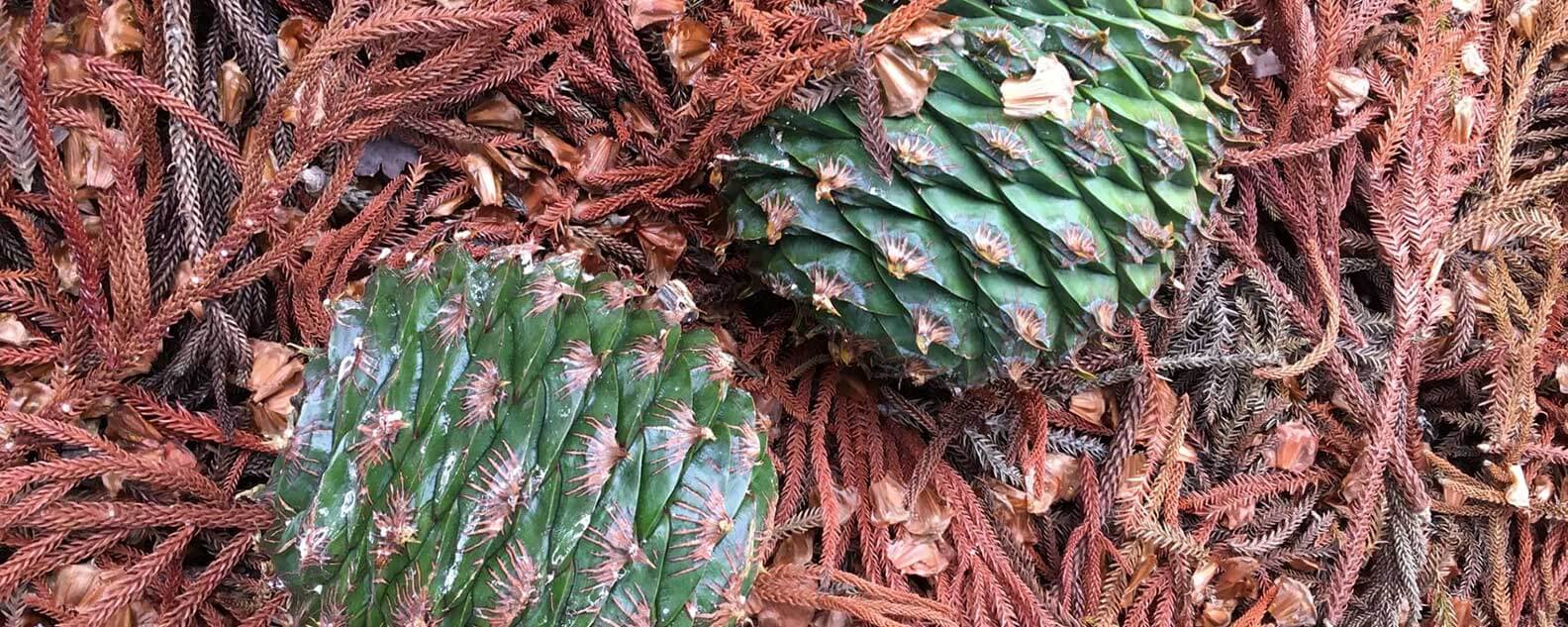
What is a Bunya Pine?
The Bunya Pine (Araucaria bidwillii) is a native of the subtropical rainforests in the mountains in south-east and northern Queensland and closely related to Australia's other living fossil the Wollemi Pine. The Bunya Pine can grow up to 35-45 metres in height and live for 600 years. The nuts can be 20-35 cm in diameter and weigh up to 10 kg, yielding enough seeds for a bushtucker feast.
Bunya nuts are falling at the Australian Botanic Garden!
Cultural significance of the trees
It has been a sacred tree for indigenous Australians for a long time and an important source of food, kindling, timber and fibre. Perhaps not as well known as pine nuts, the Bunya Pine’s large edible seeds can be eaten raw, roasted or cooked in hot coals to make bread. The tree has many other common names in various aboriginal dialects such as Bunya-bunya, Banza-tunza, Banua-tunya, Boonya, Bunyi, Bahnua, Bunya, and Bonyi-bonyi.
The importance of the tree and nut as the food wasn’t lost on early European settlers, reminding them of roasted Chestnuts from home. In the past century, Australian companies like Maton and Cole Clark Guitars have discovered that the timber of a Bunya Pine is ideal for making exceptional acoustic musical instruments.
Cooking Bunya Nuts
Where you can find these trees locally?
Historically the evergreen conifer was commonly planted around homesteads, including in the Macarthur area (south-western Sydney). Over the years our backyard gardens have reduced in size and it is no longer possible for most people to grow their own tree.
At the Australian Botanic Garden we decided to plant a number of these trees to ensure that it continues to be a signature plant for the area. Although visitors can see the Bunya Pines at the Garden, we do fence them off once they start to produce nuts to ensure public safety. We hope that in years to come you’ll be able to see them marching along the ridge as you drive down the motorway that passes by the Garden.
Few things say ancient like a Bunya Pine.
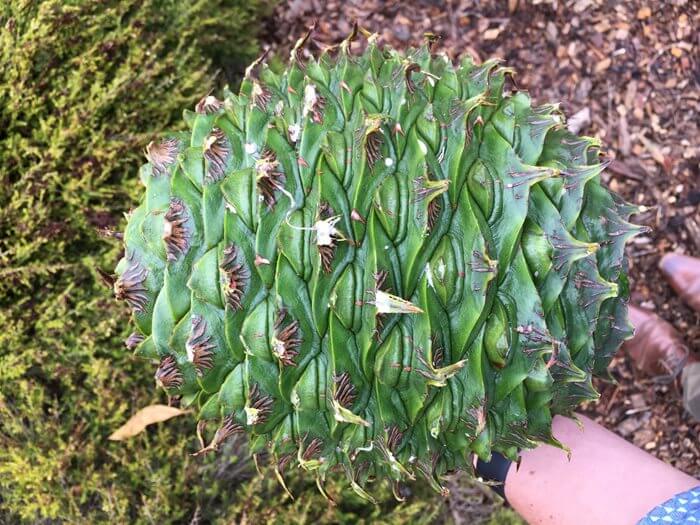
Few things say ancient like a Bunya Pine.
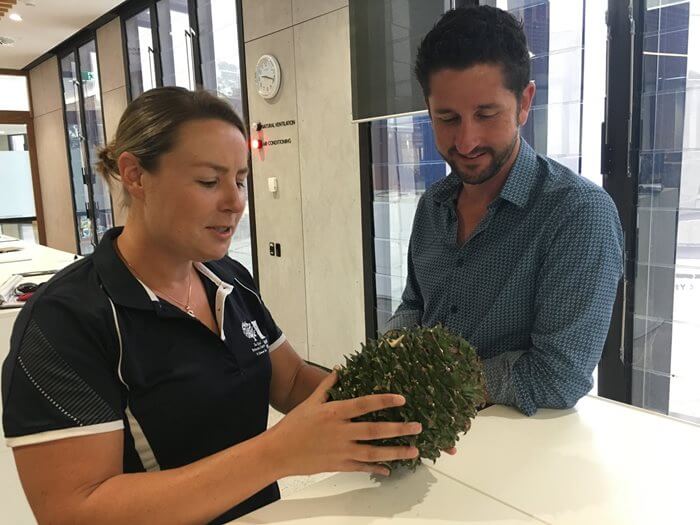
Scientists at the Australian Botanic Garden Mount Annan can hear the nuts fall.
Science and conservation at Australian Botanic Garden Mount Annan
The Australian Botanic Garden Mount Annan is Australia’s largest botanic garden, covering 416 hectares. The Garden is a native species native garden and features an amazing living collection of flora from around Australia. The living collection is just the tip of the science and conservation role at the Australian Botanic Garden Mount Annan.
We are at the forefront of plant research, being home to Australian PlantBank – the Noah’s Ark of the seed world, if you may. The Garden is a bit of a hidden gem but absolutely worth the visit.
Share your photos from the Garden by tagging us on Twitter: @AustralianBG
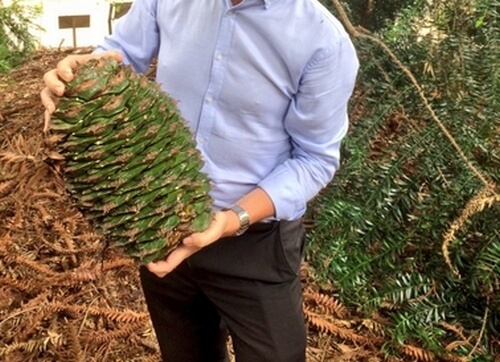
Giant, bowling ball sized Bunya Pinecones dropped in 2016 at the Australian Botanic Garden Mount Annan.
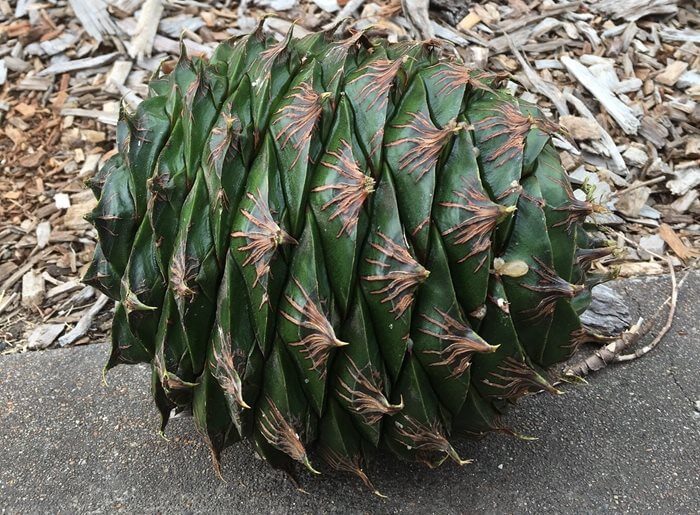
A 6 kg Bunya Pinecone recorded at the Garden.
If you are a journalist and have a media enquiry about this story, please click here for contact details and more information.
Related stories
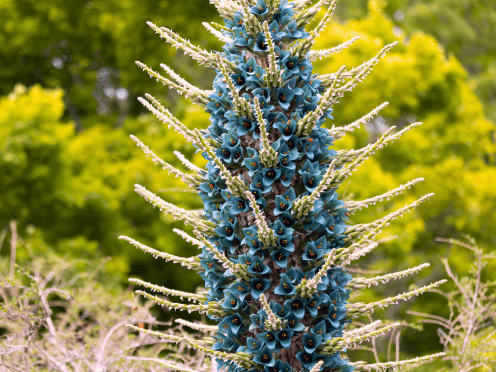
An extraordinary display of rare turquoise blooms are starting to flower at the Blue Mountains Botanic Garden Mount Tomah, with one species blooming for the first time ever.
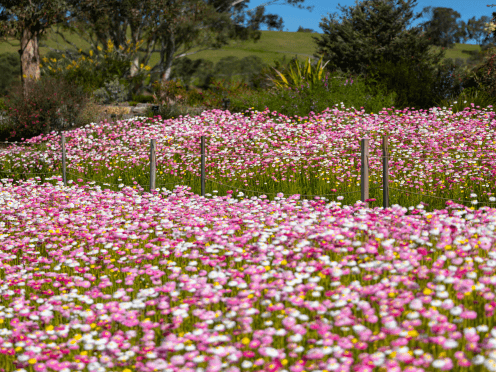
One of the largest paper daisy displays in eastern Australia is in flower at the Australian Botanic Garden Mount Annan.
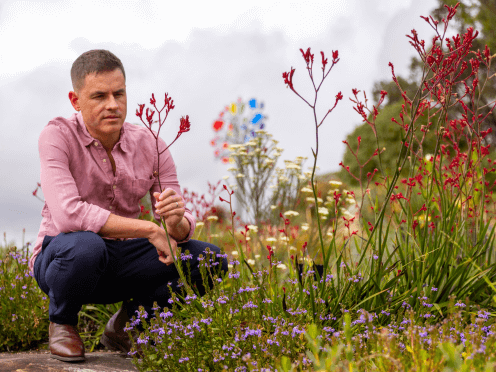
In this new episode of What the Flora!? discover why this world-first global ‘Tree of Life’ study is a new milestone in understanding the evolutionary history of flowering plants.